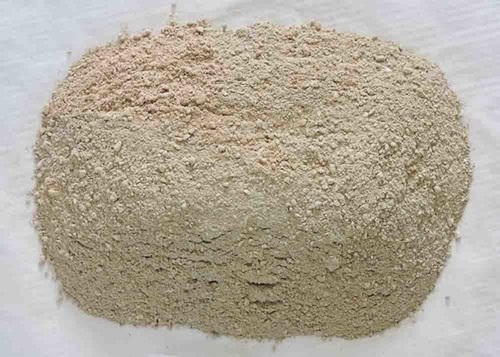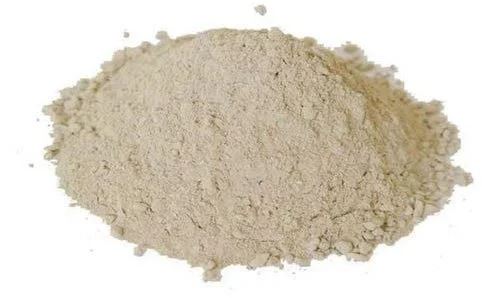Types of Refractory Clay: Which is Right for Your Application?
Refractory clay is a crucial material used in a variety of industrial processes that require high-temperature resistance. The chemical and physical properties of different types of refractory clay differ, and as such, selecting the right type of clay is essential to achieve optimal results in your application.
The significance of selecting the most appropriate type of refractory clay cannot be overstated, as it can make or break the success of your industrial process. In this blog post, we will explore the various types of refractory clay available, their different physical and chemical characteristics, common uses, and how to select the right one for your application.
Whether you are involved in metal casting, glass making, or any other high-temperature industrial process, understanding the properties and advantages of the different types of refractory clay can significantly improve the efficiency and effectiveness of your application. By the end of this article, you will be in a position to select the right type of refractory clay for your specific industrial process and reap maximum benefits.
Are you in search of the perfect refractory clay for your high-alumina brick project? Look no further! In this article, we will explore different types of refractory clay and help you identify the ideal choice for your specific needs. When it comes to finding reliable suppliers of refractory clay for high-alumina bricks, we've got you covered.
Chemical and Physical Characteristics of Refractory Clays
If you are looking for the right type of refractory clay for your
application, it’s important to understand the chemical and physical
characteristics of different types of clays. Refractory clays are
characterized by their high resistance to extreme temperatures, making them
well-suited to industries such as ceramics, steel-making, glassmaking.
There are two main types of refractory clays: kaolin and ball clay. Kaolin is a
type of clay that is made up of aluminum silicate, which is known for its
refractoriness and high fusion point. Ball clay is a type of clay that is made
up of kaolin, feldspar, and quartz. Ball clay is known for its plasticity,
which makes it easy to shape into various forms.
The chemical and physical characteristics of these two types of refractory
clays make them well-suited to different applications. For example, kaolin is
often used in the manufacturing of porcelain and refractory materials for
high-temperature applications, while ball clay is commonly used in the
production of ceramics, tiles, and sanitary ware.
When choosing a refractory clay for your application, it’s important to consider
not only the chemical and physical characteristics of the clay, but also other
factors such as its cost, availability, and environmental impact. By
understanding the unique properties of kaolin and ball clay, you can make an
informed decision about which type of refractory clay is right for your
application.
Benefits of Using Refractory Clays
The structural integrity of construction materials is maintained when
refractory clays are used in high-temperature applications. Among the many
benefits of using refractory clay in your application are improved durability,
insulation, and thermal shock resistance. These properties can help ensure that
your materials can withstand high temperatures and harsh environments over
time.
One of the biggest benefits of using refractory clay is its ability to
withstand high temperatures without breaking down or deteriorating. This makes
it ideal for use in kilns, furnaces, and other high-temperature applications,
where other materials might fail. Additionally, refractory clay is excellent at
insulating heat, which helps maintain a consistent temperature in the
surrounding area, reducing energy costs and increasing efficiency.
Choosing the right type of refractory clay for your application is critical to
achieving optimal results. Different types of refractory clay have varying
properties that make them suitable for different applications. For example,
kaolin clay is excellent for use in high-temperature applications that don't
require extreme insulation, while fireclay is ideal for use in applications
where high insulation is necessary.
It is impossible to overstate the advantages of using refractory clay. By
choosing the right type of clay for your application, you can ensure that your
materials maintain their structural integrity and remain functional even in
harsh and demanding environments. So, if you're in the market for high-quality,
durable refractory clay, consider your options carefully and find the right
type to meet your specific needs.
Common Uses for Refractory Clays
Refractory clays are an essential ingredient in many industries worldwide.
Their unique resistance to heat makes them the go-to material for making kilns,
furnaces, and other high-temperature equipment. There are several types of
refractory clay available in the market, each with its unique characteristics,
making them suitable for specific applications.
One common use for refractory clay is in the construction of fireplaces and
chimneys. These structures have to withstand high temperatures without
crumbling or cracking. Refractory clay is the perfect material for such
applications, ensuring the longevity and safety of the structure.
The ceramics industry also relies heavily on refractory clay. Manufacturers use
it to make kilns and furnaces that can fire ceramics at extremely high
temperatures, resulting in a more durable product. Refractory clay is a vital
ingredient in creating high-quality ceramics that can stand the test of time.
For this reason, it is vital to select the appropriate type of refractory clay
for your application. Whether you're a manufacturer or a DIY enthusiast,
understanding the properties of the different types of refractory clay will
help you make the right choice. Investing in high-quality refractory clay
ensures that your equipment lasts long and performs optimally, making it a
worthwhile investment in the long run.
How to Select the Right Refractory Clay for Your Application
To choose the right refractory clay for your application, it is important
to understand the differences between them. Clay used for refractory
applications, including furnace linings, kiln linings, and crucibles, can
withstand high temperatures and is a type of ceramic material that is resistant
to high temperatures. Some of the most common types of refractory clay include
fire clay, kaolin clay, and ball clay.
Fire clay is a type of refractory clay that is known for its high resistance to
heat. It is made from a mixture of kaolin and other refractory materials and is
often used in the construction of fireplaces, furnaces, and other high-heat
applications. Kaolin clay, on the other hand, is a type of refractory clay that
is known for its high plasticity and bonding strength. It is often used in the
production of ceramics and as a filler in paper, paint, and other products.
Ball clay is another type of refractory clay that is known for its plasticity
and ability to hold shape. It is often used in the production of ceramics and
is frequently found in the construction of pottery and other decorative items. When
selecting the right refractory clay for your application, it's important to
consider factors such as temperature resistance, plasticity, bonding
strength.
Finally, selecting the right refractory clay is crucial to the success of your
application. Whether you're using fire clay, kaolin clay, or ball clay, each
type has its own unique properties and benefits. By understanding the different
types of refractory clay available, you can make an informed decision and
ensure that your application is a success.
Benefits of Using the Right Refractory Clay for Your Application
Choosing the right refractory clay for your application can make all the
difference in the success and longevity of your project. With so many types of
refractory clay available on the market, it can be overwhelming to decide which
one is right for you. However, taking the time to research and carefully select
the best option will ultimately pay off in the end.
There are a variety of benefits that come with using the right refractory clay
for your application. The most obvious is that it will provide better
performance, durability, and resistance to high temperatures. This means that
your project will be less likely to crack or break down over time, resulting in
fewer costly repairs and replacements.
Another benefit is that the right refractory clay can often reduce energy costs
by better insulating heat, which leads to more efficient heating and cooling
processes. Additionally, some types of refractory clay are less expensive than
others, allowing you to save money without sacrificing quality or performance.
The time you take to research and select the right refractory clay for your
application is an investment in your project's success and longevity. By considering
factors such as temperature, application, cost, you can make an informed
decision enjoy the many benefits that come with using the right product.
You may feel overwhelmed by the choices when it comes to choosing the
correct type of refractory clay for your application. However, with a little
insight into the different types available, you can make an informed decision.
One type of refractory clay is fire clay, which is often used for fireplace
linings, furnace bricks, and kiln linings. This type of clay boasts great heat
resistance and excellent workability, making it a go-to for many applications.
Another type of refractory clay is kaolin, which is known for its high
refractoriness and excellent thermal shock resistance. This material is often
used for manufacturing fire bricks, porcelain, and more.
No matter what your specific application may be, there is a refractory clay out
there that is the perfect fit. With a bit of research and some guidance from
experts in the field, you can find the right clay that will stand up to the
task and provide long-lasting performance.
Conclusion
You can make a significant difference to your project's success if you choose the right type of refractory clay for your application. The properties and characteristics of different types of clay can dramatically affect their suitability for different applications, from firebricks to furnace linings.
By understanding what each type of clay offers, and how it behaves under high temperatures and harsh conditions, you can make an informed choice that will guarantee optimal performance and durability. So, take the time to consider the various types of refractory clay discussed here and choose the one that is best for you. After all, your success may depend on it!



Comments
Post a Comment